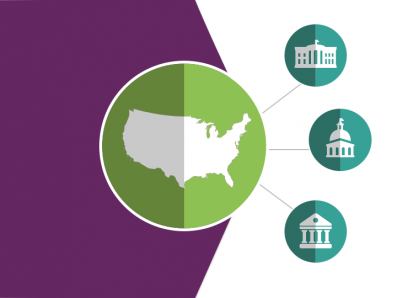Structure of Government — for Facilitators
Tools for Public Health Law Academy trainers
This collection of tools supports anyone interested in teaching public health practitioners about how different levels of government can work together to achieve shared public health goals. It is part of the Public Health Law Academy (PHL Academy), which provides a deeper understanding of the use of law and policy to improve population health outcomes.
Start with our Structure of Government training, then download and tailor the following resources for your specific audience:
- Facilitator's Checklist
- Facilitator's Guide that can be customized for your community
- Facilitator's Script that can be modified for your audience and speakers
- Slide Presentation that can be adapted to your unique training content
About This Training
All levels of government — federal, state, tribal, local, and territorial — have a role in protecting the public’s health. However, these roles are not clearly spelled out for every situation. State-to-state differences can be complicated, and the responsibilities of different government agencies might overlap when public health issues need to be addressed.
Confusion can arise when the powers of the different levels and branches of government are not clearly articulated or understood. This confusion can be especially difficult if there is an emergency requiring quick and decisive action.
The goal of this training is to direct attention to these challenges and explore how different levels of government can coordinate and collaborate to achieve shared public health goals. The training incorporates stories from the field and demonstrates how the powers and authorities of different government agencies play out in everyday practice. Examples include menu labeling, tobacco control, quarantine, vaccination, helmet requirements, and food safety.
Learning Objectives
Instructors can tailor these training materials to achieve the following learning objectives:
- Describe how a balance of powers is maintained among the three branches of government.
- Identify the various types of laws that different branches of government can create.
- Explain why intergovernmental collaboration is important for achieving improved health outcomes.
